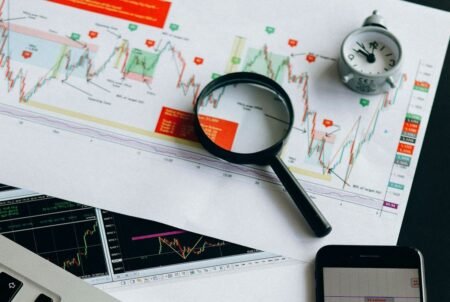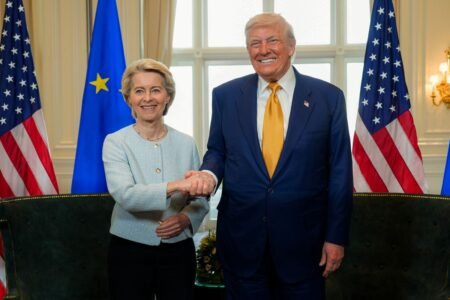The European Central Bank unveiled Thursday an eagerly-awaited programme of sovereign bond purchases, known as quantitative easing or QE, to ward off deflation in the eurozone.
Advertisement
(FRANKFURT) – The European Central Bank unveiled Thursday an eagerly-awaited programme of sovereign bond purchases, known as quantitative easing or QE, to ward off deflation in the eurozone.
After the ECB held its key interest rates at their current all-time lows at its first policy meeting of 2015, central bank chief Mario Draghi said a programme would be launched to buy 60 billion euros of private and public bonds per month starting in March.
QE is already used by other central banks around the world to stimulate their economies, but is contested in Europe because it is seen as a way of printing money to pay the way for governments out of debt, which the ECB is expressly forbidden from doing under its statutes.
And while consumer prices in the single currency area actually fell for the first time in five years in December, analysts and ECB officials insist that there is no sign of deflation in the region just yet.
– What is deflation?
Deflation is defined as an extended period of falling prices where consumers begin to put off purchases in expectation they will fall further, sparking a damaging cycle of falling production, employment and prices.
Consumer prices in the eurozone fell by 0.2 percent year-on-year in December, the first drop in more than five years, driven down mainly by tumbling oil prices.
But a one-off like that is not synonymous with deflation, economists say. And ECB officials, too, have repeatedly stated that they see no sign of the eurozone sliding into deflation for now.
Normally, central banks keep inflation (and deflation) in check by adjusting their key interest rates.
If the economy is in downturn and companies are nervous about the future and scaling back on investment, a central bank can reduce the overnight rate that it charges banks, reducing their funding costs and encouraging them to make more loans.
In the wake of the financial crisis, the ECB, like other central banks around the world, slashed their overnight interest-rates to close to zero. But that still failed to spark a sustained recovery, so they resorted to more unconventional tools to encourage banks to pump money into the economy, including QE.
– What is QE?
Under QE, a central bank in effect creates money by buying securities such as government bonds from banks with electronic cash that did not exist before.
The aim is to stimulate the economy by encouraging banks to issue more loans: the banks take the new money and then buy assets to replace the ones they have sold to the central bank. That raises stock prices and lowers interest rates, which in turn boosts investment.
In theory, the central bank can also purchase corporate debt, but the market for sovereign debt is much bigger and would therefore have a much bigger impact.
In order to get round the ban on government financing, the ECB buys bonds that have already been issued via the so-called secondary market.
In the past, the ECB has already bought up the sovereign bonds of a number of the countries hit hardest by the crisis, such as Greece, Portugal and Ireland. But these purchases were not considered to be QE because they were targeted specifically at the countries concerned and not on a wide scale.
– Does it work?
The US Federal Reserve launched three QE programmes, buying up around $4.0 trillion of debt in total. The Bank of England also used QE several times, first in 2009 and then in 2011 and 2012.
Berenberg Bank economist Rob Wood estimated that Britain and the US averaged 3.0-percent nominal growth since embarking on QE, while the eurozone had only managed to clock up growth of 1.1 percent.
The Bank of Japan was the first to use QE as tool, back in the early 2000s, but the Japanese economy is still entrenched in deflation.
Nevertheless, QE for the eurozone is different because the ECB will buy the debt not of just one country, as was the case in the US or Japan, but of 19 different countries in very different states of economic health.
That raises a number of issues, since the sovereign debt of one country may be riskier than another.
Critics had expressed concern that European taxpayers would have to foot the bill if any one country defaulted on its debt.
But the ECB plan has been designed so that only 20 percent of those risks would be shared, with the other 80 percent to be shouldered by the national central banks of the countries concerned.







